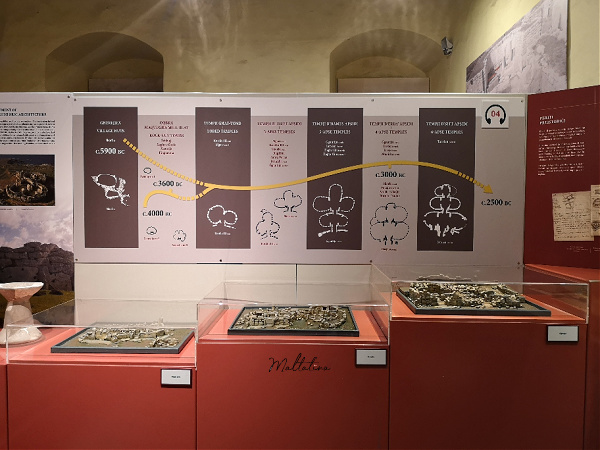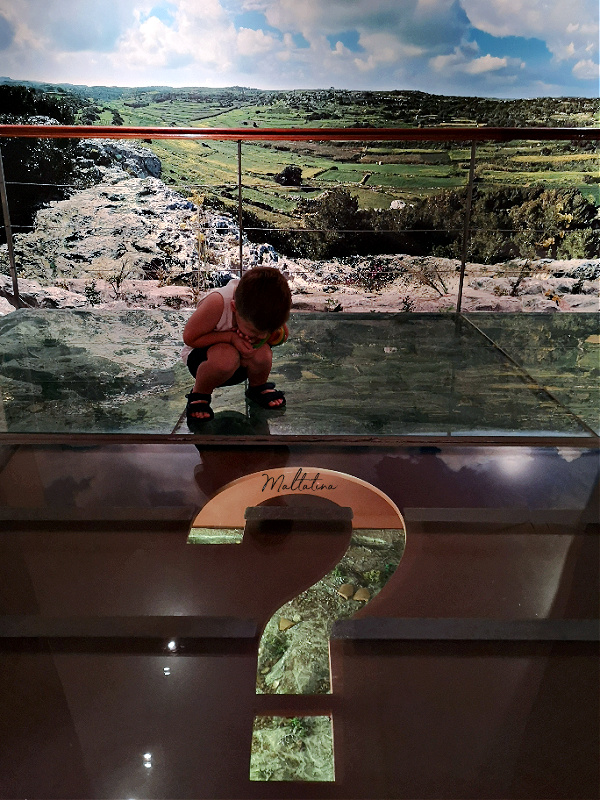National Museum of Archeology, Valletta
When it’s too hot for the beach we hide in a museum. It might come as a surprise to many to take a 2 year old to a museum, but believe it or not, he finds them interesting. We spent a good hour there exploring the different displays. Obviously some were more interesting that others for him and I didn’t really have time to read every description, but the museum gave us shelter and filled our afternoon program.
If you’ve never been, don’t worry I won’t judge you, it was our first visit too, the museum is located in Republic Street, Valletta.
Now, are you ready to go and check it out?

So what do we know about this museum? It’s housed at Auberge de Provence a beautiful baroque building that was built in 1571 to serve as the official residence of the Knights of the Order of St John.
What can you look forward to seeing in the National Museum of Archeology? It offers a spectacular range of artefacts which date back to Malta’s Neolithic Period (5000 BC) up to the Phoenician Period (400 BC). As you can imagine, I was most eager to see the famous ‘Sleeping Lady’ (from the Ħal Saflieni Hypogeum).
When you walk in to the National Museum of Archeology don’t forget to look up! What an amazing and large fresco painting is decorating the ceiling.

When we walked in with our ticket, Olly was welcomed with this kind neanderthal. Obviously we had to take a picture with his new friend.

We started our tour of the museum here… with the aliens!

This exhibition is dedicated to the skulls found in Malta during excavation works at the major archeological sites. There are some, which are rather ‘longheaded’ and have been the centre of controversy for years.

It also shows you how to determine whether the skull was male or female and what can be found from teeth remains. Very interesting and we had to check it out in detail – just to make sure he will brush his teeth well, you know. 🙂

The next exhibition – the Neolithic Hall – is probably the most photographed one. I recognized it straight away after seeing it in countless promotional materials. What you can see here is Maltese megalithic art. There are four main categories of the designs that you can see here:
- spirals and their variations,
- animal, fish and plant representations,
- abstract decorations,
- pitted decorations.

Most of the decorated stones on display came from the Tarxien temples where megalithic art reached its highest level of expression. The decorate stones may have had various functions. One role was to provide the temple interior with artistic creations. Some of them might have functioned as sacrificial altars. Others could have been barriers to close off access points.

There is so much to see in this museum and you got to always pay attention not to miss a thing. Why? Because the exhibited items vary from meters big to millimeters small.
Here you can see a tiny model of a megalithic building carved out of limestone. It shows a trilithon entrance (a trilithon is a structure consisting of two large vertical stones supporting a third stone set horizontally across the top) and walls formed of slabs.

Few steps away you can see a huge remains for a statue which must have been originally at least 3 meters tall. It was placed at a prominent place in the Tarxien temple. It is indeed the largest figure that was found to date and its role must have been of great importance.


This is a large display of Hagar Qim seated headless stone statues with their feet ticked under them. They all have similar arms position. This Hagar Qim group suggests that in some cases, figures were originally meant to have separate heads.

And here she is! ‘The Sleeping Lady’. I don’t think I ever realised how small this statue actually is, always seeing just enlarged images of this artefact. This beautiful figure dates back to 3000 B.C and was discovered in Hal Saflieni Hypogeum and quite possibly represented Death or the eternal sleep.

This display shows the chronological development of Malta’s megalithic temples. In the above display you can see Hagar Qim, Mnajdra and Ggantija Temples. They are amazing miniatures of the temples, showing nicely the evolution of Maltese megalithic temples’ architecture.

Here we moved on to the second floor and behind Olly is a recreation of cart ruts that can be found in many places on the Maltese Islands. On land as well as under water. The cart ruts are still rather puzzling for many people and they are very hard to date.

We really enjoyed all of the displays. Olly loves seeing the videos as well as amazing props just like this miniature of a dolmen.
Dolmens are monuments that are usually associated with funerary rites of the Bronze Age people. A dolmen is basically made up of a large stone slab supported by smaller stones. There are at least seventeen sites on the Maltese Islands were dolmens were recorded, some with more than one.

Our last stop was at the numismatic collection. This was also one of our favourite ones, because who doesn’t like coins, tokens, paper money, medals and other related objects? Well we do! It’s a relatively small exhibition. Basically what you see in the photo, but we still had fun one checking out all the coins.

We also couldn’t help to have a little sneak peak of the currently closed Gran Salon due to restoration and conservation works. It just looks amazing and so majestic, doesn’t it?

And this is the end of our tour today. I hope you enjoyed the virtual tour of the National Museum of Archeology as much as we did and will go and check it out.
Also just a little reminder, if you like my blogs you can support me monetarily or by purchasing some of my unique products.
Thank you! xxx



